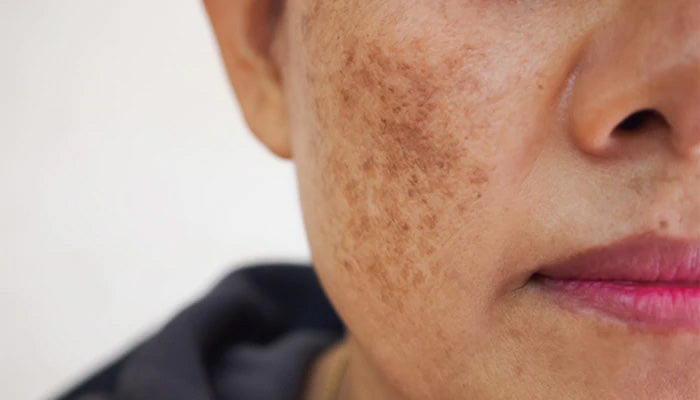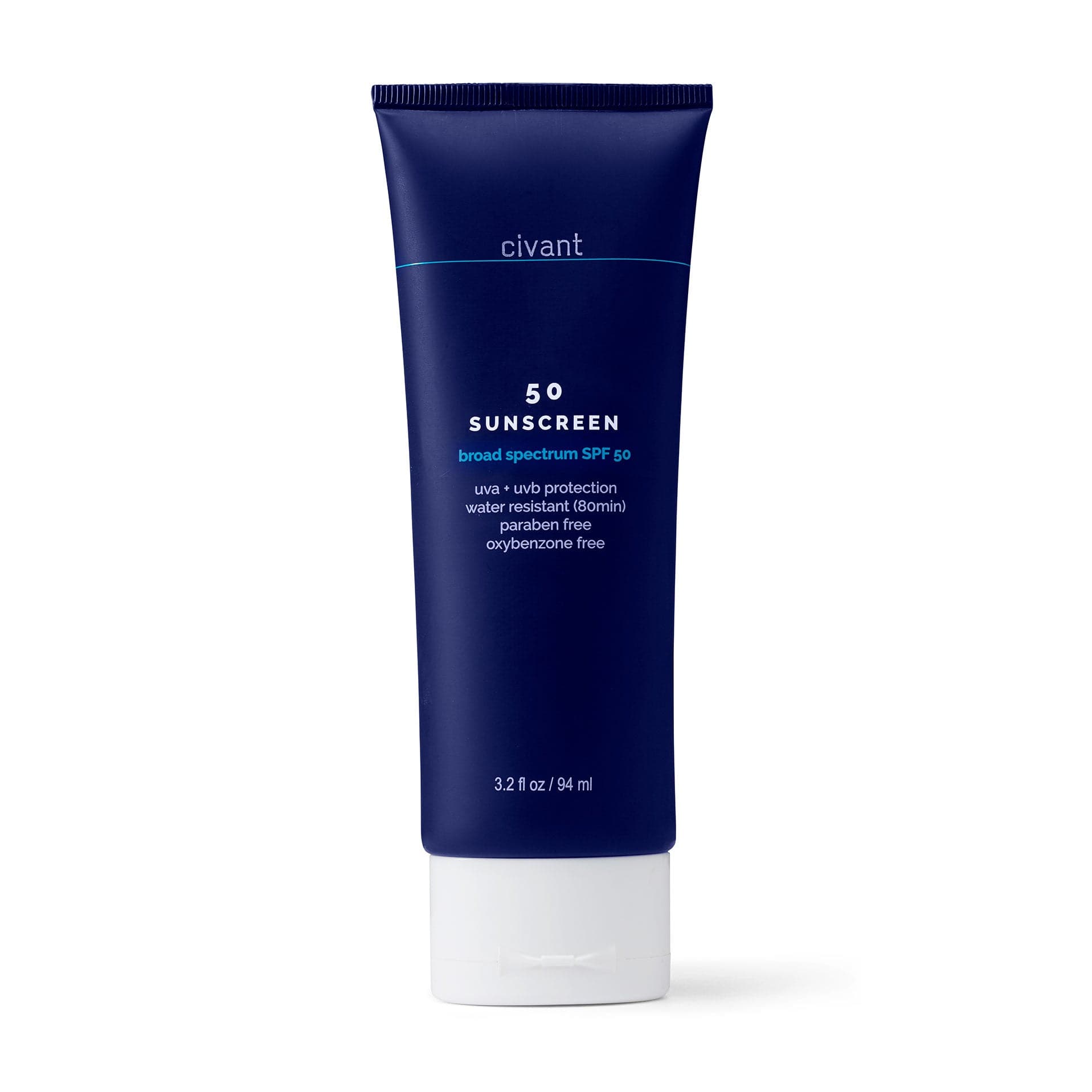Many people – both men and women – will experience dark, brown patches appearing on their skin as they age. These brown patches can be many different types of (mostly harmless) skin pigmentation known as ‘hyperpigmentation’, which can include anything from age spots to melasma. In this article, we’ll tell you all about the different types of hyperpigmentation, including what causes it and, most importantly, how you can treat it.
What is hyperpigmentation?
Hyperpigmentation is a term that’s used to describe uneven skin colouring. The main cause of this is when the skin is producing more melanin than it should, which results in patches of dark brown skin. People can experience hyperpigmentation all over their body, but it’s most commonly observed on the face and neck. It’s also something that is commonly experienced by those of us who have a darker complexion or naturally tans easier. There are three main forms of hyperpigmentation: age spots, melasma, and post-inflammatory hyperpigmentation.
Age spots
As the name would suggest, age spots are common in older people and are caused by exposure to the sun. Most people will experience age spots on their face, as this is an area that is frequently exposed to the sun, but you can also experience it on your neck, chest, back, or forearms.
Melasma
Melasma mainly affects women, especially those who are pregnant or on birth control and is characterized by dark brown patches on the face or neck. It’s largely triggered by the hormone changes women go through when they’re pregnant, but it can also be brought on by sun exposure or stress.
Post-inflammatory hyperpigmentation
When you’ve had a blemish, scar, or another type of skin trauma, you’ll often be left with some kind of flat discoloration that hangs around long after everything has healed – this is post-inflammatory hyperpigmentation. It can be caused by acne, eczema, or cosmetic procedures like chemical peels and dermabrasion.
What causes hyperpigmentation?
Depending on the type of hyperpigmentation you’re experiencing, there are a variety of different causes that you should be aware of. Once you know the cause of the issue, you’ll find it much easier to prevent further discoloration, and find the right treatments to clear your skin up.

Sun exposure
Overexposure to the sun is one of the leading causes of hyperpigmentation, but it’s also one of the most preventable. When you’re laying outside, the sun is beaming down UV rays that trigger the production of melanin in your skin (this is what’s responsible for skin color). Sun exposure stops normal melanin production and causes it to over-produce, which is what brings on the appearance of these darker brown patches of hyperpigmentation.
Aging
As we age, our skin goes through a lot of changes, one of these being a reduction in melanin-producing cells. Even though you’d think that a reduction of these cells would stop hyperpigmentation, it actually has the opposite effect. As these cells decrease in number, the ones that get left behind increase in size and become more focused in certain areas – resulting in dark patches.
Hormones
Hormonal changes – especially when pregnant or on birth control – are the main cause of melasma. This is because, during these periods, oestrogen and progesterone stimulate melanin production when the skin is in the sun.
Skin injuries
Finally, when you’ve experienced a cut, burn, chemical exposure, eczema, or acne, you’re likely to experience post-inflammatory hyperpigmentation after the initial injury has healed.
How to treat hyperpigmentation?
The most important thing that you can do to prevent hyperpigmentation before it even has time to form is to use good-quality sunscreen every single day. Even on gloomy days when you think there’s no chance of getting sunburnt, the sun’s UV rays could still be causing your skin damage.
We recommend incorporating a broad-spectrum sunscreen, preferably SPF 50, into your morning skincare routine. You should also reapply it every couple of hours, especially on the sunniest days when the UV rays are strongest.
You can also buy topical creams that can help gradually reduce the appearance of hyperpigmentation, like Meladerm®. Formulated to help with stubborn melasma, dark spots, discoloration and acne marks, our pigment correction cream contains a synergistic blend of proven ingredients that work together to keep skin discoloration at bay. Containing active ingredients such as niacinamide and alpha-arbutin in their highest concentrations by the skin, we’ve perfected a highly effective formula that completely outperforms other similar products on the market.
When it comes to using topical creams for hyperpigmentation, consistency is key. We recommend using products like Meladerm® twice a day to see the full benefits. If you want to find the perfect skincare routine, or just want some advice, get in touch with our skin experts today.




